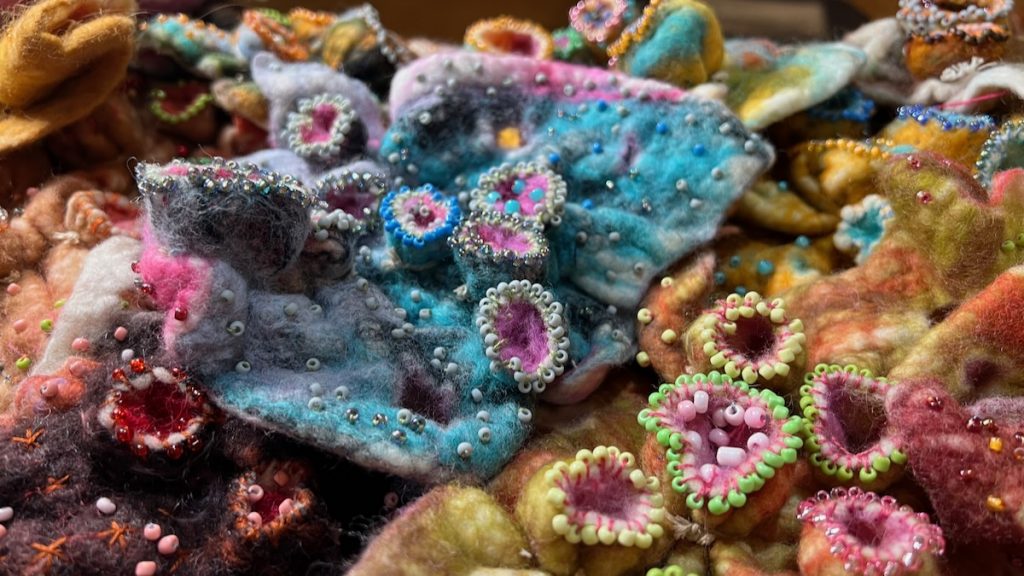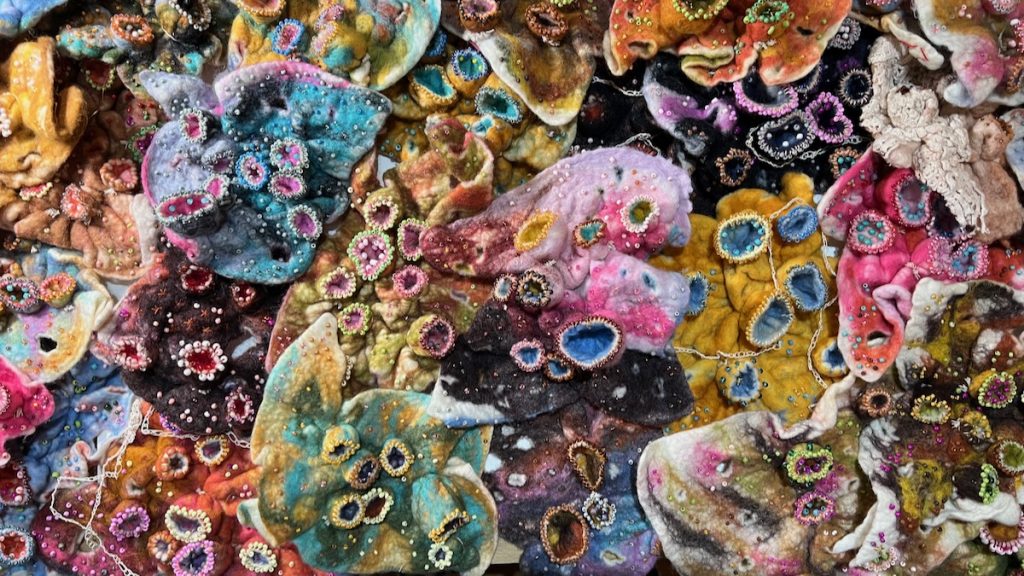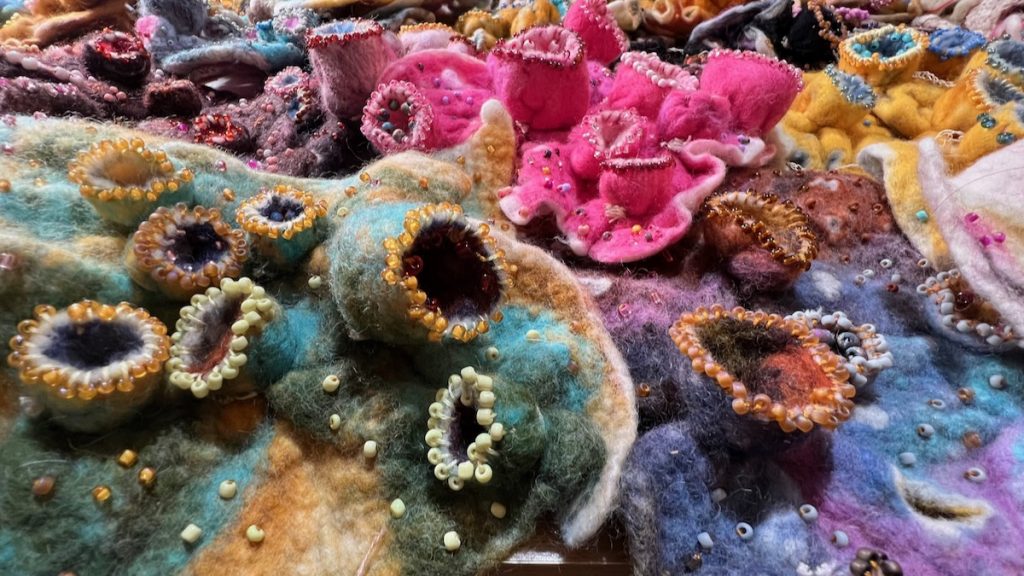Fragile Microbiome (2024) is a large scale, wall-sized, hand-felted artwork which is embroidered and beaded to represent our intestinal microbiome, the lining of the gut and the rich communities of bacteria that live inside us. It is impregnated with their DNA. The piece also contains bilirubin and biliverdin, two bile pigments which combine to give faeces their brown colour. They also give bruises their diverse colours (red, brown, green, yellow).

If we take antibiotics to treat diseases, they can sometimes reach our guts in sufficient amounts to affect our natural gut bacteria – our microbiome – and damage that fragile ecosystem, like a bruise. This leaves us potentially vulnerable to colonisation with micro-organisms that can go on to cause disease, such as Clostridioides difficile, which can cause very unpleasant and debilitating health issues.

Holes in the felt echo the effects of broad-spectrum antibiotics on the gut, where the normal microbiome dies off in patches, leaving spaces for potentially more dangerous bacteria, a situation known as dysbiosis.

The work was made in collaboration with Dr Jane Freeman and members of the Healthcare Associated Infections Research group, including academic and clinical members of staff at the University of Leeds.
Materials: Wet felt, needle felt, beads, embroidery, sterilised gut bacteria from a diverse microbiome bile pigments.
Exhibitions, Outcomes and Media Coverage

Fragile Microbiome is currently on show as part of “INVISIBLES. La vie cachée des microbes” at the Musee De La Main in Lausanne, Switzerland. The exhibition opened on 26th June 2024 and continues until 4th January 2026.

Fragile Microbiome is featured on the front cover and lead image of The Pathologist Magazine, June 2024 issue (UK/USA).

Fragile Microbiome premiered as part of Fragile Microbiomes (solo exhibition by Anna Dumitriu) at the Thackray Museum of Medicine, Leeds, UK, from 10th February to 23rd June 2024.
